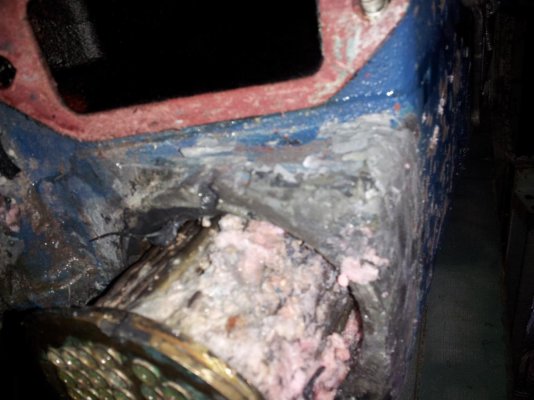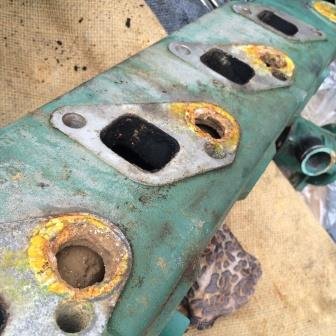Gabe n Em
Guru
Hi All,
When we first purchased the In Sanity a couple years ago, we had both engines(perkins t6.354s) gone over and they've been great (knock on wood) ever since (except a slow FW pump seal failure and recent replacement).
I was too busy with the initial acquisition to think about such things but looking back through the pictures recently, I found this one (below). I used to think this was just salt but I think this is on the FW side, now that I'm looking at it. Are these the dreaded silica precipitates one gets from using the "wrong" coolant??
To be clear: This was remedied professionally at time of purchase but I'm wondering if I should change what I'm doing with regards to the flavor of coolant.
Thanks for the input.
When we first purchased the In Sanity a couple years ago, we had both engines(perkins t6.354s) gone over and they've been great (knock on wood) ever since (except a slow FW pump seal failure and recent replacement).
I was too busy with the initial acquisition to think about such things but looking back through the pictures recently, I found this one (below). I used to think this was just salt but I think this is on the FW side, now that I'm looking at it. Are these the dreaded silica precipitates one gets from using the "wrong" coolant??
To be clear: This was remedied professionally at time of purchase but I'm wondering if I should change what I'm doing with regards to the flavor of coolant.
Thanks for the input.



